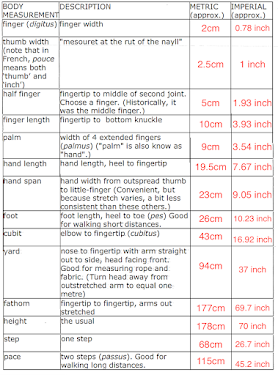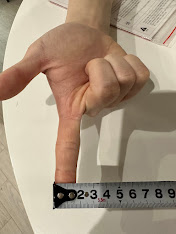Part 1: The Power of Gestures in Teaching Mathematics
Embarking on Gerofsky's (2011) exploration of "Seeing the graph and being the graph," the concept of using gestures in mathematical instruction felt uncharted. The word "gesture" sparked connections to my role as a teacher working with English Language Learners (ELL) and memories of students expressing themselves through intricate body language.
The study delves into the impact of teachers' gestures on students' understanding of mathematical concepts. A compelling example involved the class gesturing the shape of a graph for the function y=4. The diversity in students' gestures, ranging from subtle hand movements to whole-body engagement, highlighted the multifaceted nature of conveying mathematical ideas through gestures.
I couldn't help but relate this to a recent experience with a student. While not directly related to mathematics, the term "gesture" reminded me of a science experiment conducted by a student involving corn starch and water. Struggling to verbally explain the gooey texture, she used her entire body to demonstrate how it flowed and moved—a vivid illustration of the power of embodied expression (see photo).
The study recognized that gesturing in mathematics goes beyond demonstrating knowledge and skills; it becomes a multimodal resource for learners. Experimenting with gestures while visualizing graphs underscored the power of embodying mathematical concepts. The study suggested incorporating gestural approaches in teaching graphs and functions resonated, particularly as I consider its applicability to my grade one students, especially in upcoming lessons on measurement using non-standard units.
Questions arose concerning English language learners:
1. How would they express understanding in the new unit?
2. How could gestures enhance their comprehension of mathematical concepts?
These inquiries underscore the importance of making learning engaging and meaningful for young learners.
Reference: Gerofsky, S. (2011). Seeing the graph and being the graph. Educational Studies in Mathematics, 76(3), 245-256.
Part 2: Body Measurement Adventures
In body measurements, I embarked on a fun activity using my partner as a measurement tool. Comparing our measurements to those in the Math and Measurement in the Garden handout revealed surprising correlations, sparking curiosity about factors influencing the results.
Cultural differences emerged, notably my unfamiliarity with inches due to a centimeter-centric upbringing in Korea. The discomfort prompted contemplation on the arbitrary nature of measurement units. We measured our kitchen island using my partner's hand length, creating a practical application of the body measurement exercise.
Differing preferences surfaced – my partner leaned toward inches, while I favored centimeters and handspan. The ensuing discussion explored convenience and underscored the versatility of using both measurement systems, ultimately appreciating the value of having a measuring tape.
This body measurement exercise extended beyond the playful aspect, providing insights into practical applications. Considering a new wine cooler purchase, the exercise informed us about available space and compatibility with the kitchen island. The interplay of preferences and considerations enriched our understanding of measurements.
In conclusion, the week's exploration encompassed the influential role of gestures in teaching mathematics and the practicality of body measurements. As I integrate these insights into my teaching approach, I look forward to fostering a dynamic, engaging, and inclusive learning environment for my students.











I think it's fascinating how we arrived at very similar places after reading our articles? I know that we both work with very high proportions of students learning English, and this constantly impacts our view of the materials we encounter in the program. As we explore math using the arts and our bodies, I'm specifically looking for ways to better engage my ELLs. This year has bee extremely challenging in regards to teaching math, as over half of my students are beginners to English. As such, all of the discussion-based lesson and sharing structures that I normally love to employ have been...less than useful! I really appreciated your summary of the article, and I hope it's the beginning of a meaningful exploration of how we can better reach these students.
ReplyDeleteI appreciated your description of using body measurements as "playful." I have discovered that students naturally take to using non-standard units, and that it does become more of a form of play than what feels like pure mathematics to them! Even my student with moderate autism easily grasped the idea of using hands, feed, and blocks to measure the height of peers. It's amazing that we feel this playful aspect even as adults!
Hi Sue
ReplyDeleteI really like the example you shared about the diverse gestures representing the graph for the function y=4. It truly highlights the richness of conveying mathematical ideas through various bodily expressions. It reminded me of the importance of recognizing and embracing different learning styles among students. Some may resonate more with subtle hand movements, while others may grasp concepts better through whole-body engagement.
Your connection to working with English Language Learners adds a valuable perspective, emphasizing the universality of non-verbal communication in education. Your questions about English language learners are crucial, and I appreciate your consideration of their unique challenges. Exploring how they would express understanding in a new unit and how gestures could enhance their comprehension of mathematical concepts aligns with the broader goal of making education inclusive and accessible. It prompts a deeper reflection on adapting teaching methodologies to cater to diverse linguistic backgrounds.
In contemplating the questions about English language learners, I wonder if there are specific training or professional development opportunities for educators to develop a repertoire of gestures that resonate with students facing language barriers. How can teachers be supported in refining their non-verbal communication skills to better cater to the needs of English language learners?